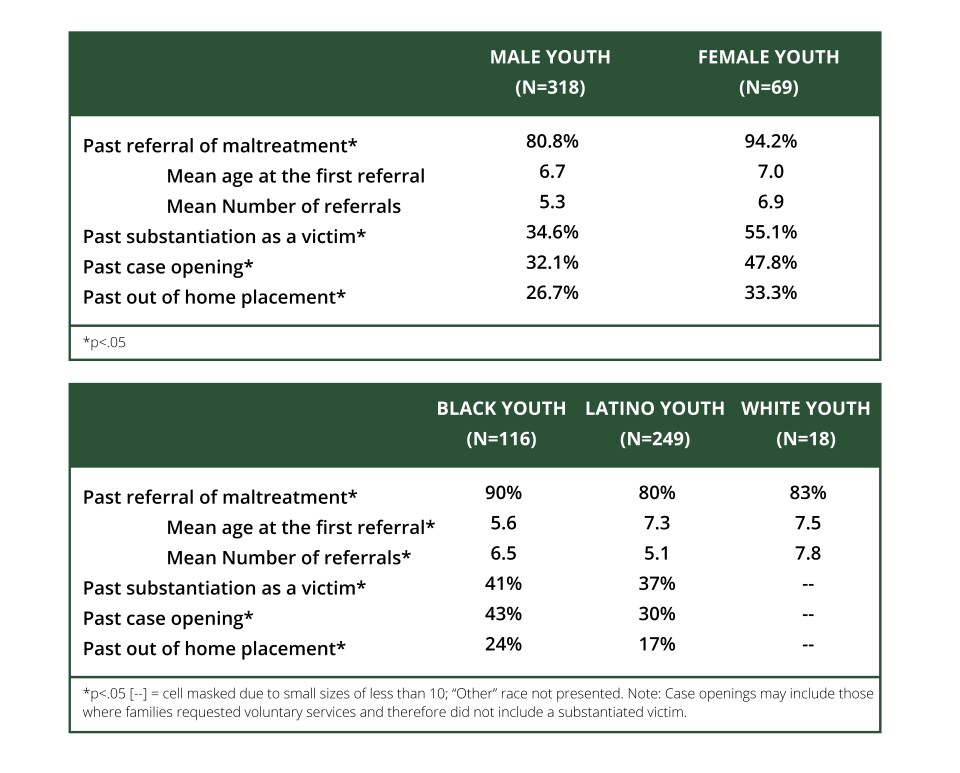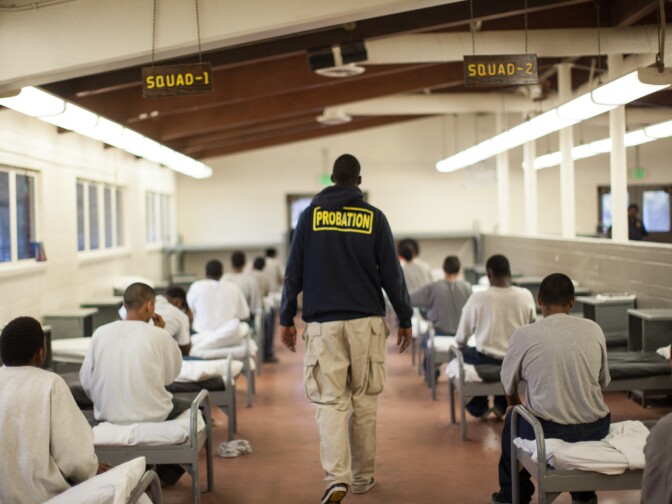With our free press under threat and federal funding for public media gone, your support matters more than ever. Help keep the LAist newsroom strong, become a monthly member or increase your support today.
A pipeline to juvenile detention? A new study aims to find where officials can intervene
A new study finds that the troubles of the hundreds of youth leaving the juvenile justice system in Los Angeles County each year may have started at home in early childhood.
For most coming out of juvenile detention, the county's child protective system had received a warning about their mistreatment as kids, according to the study released Friday from the University of Southern California's Children's Data Network.
Four out of five exiting in 2015 had at least one referral to the Department of Children and Family Services's child protection hotline for suspected maltreatment, researchers found. For nearly half, those referrals occurred before age 5.
"The reason we’re so interested in this finding [is because it] means that we can offer those families support and help at the time of the initial call – as opposed to waiting until they’ve already committed a crime or are already involved in the juvenile justice system," said Jacquelyn McCroskey, co-director of the Children’s Data Network at the USC Suzanne Dworak-Peck School of Social Work.
Researchers examined the records of 387 youth who exited from juvenile detention camps or other probation settings in 2015. While 83 percent had referrals to child protective services, more than a third had a maltreatment report substantiated, and 20 percent had been removed from their home due to abuse or neglect.
"It’s very difficult for many youth to figure out a way to a positive future after multiple such experiences," said McCroskey.
The researchers hope that illuminating this connection will help the county identify ways to provide supports for families earlier to both prevent maltreatment and delinquency. Previous studies from the Children's Data Network have examined linked between youth in juvenile detention who had previously been in foster care or had open cases, but had not looked at referrals through the DCFS hotline.
"We are increasingly realizing that a simple call to the child protection hotline is often a call for help," said McCroskey. "But what the child protection system usually has to offer is protection for the child and not help for the whole family."
The report suggests the need for more collaboration between child welfare and probation agencies, more community-based services to help families after referrals are made and the adoption of a county-wide system to align public and private resources.
"When we think about delinquency usually we think about it being that single youth who got into trouble," said McCroskey.
"If – as many people have suspected for a long time – these are patterns that develop over time and we can support their families in the first place, I think the youth and everybody else is gonna be much better off."

County officials have in recent years expressed renewed commitments to preventing abuse and maltreatment. In 2015, the county established the Office of Child Protection to encourage collaboration between the siloed agencies in the county. Across the state and country, the early childhood field is rallying around the concept of trauma-informed care, which takes into account the causes of behavior issues.
"I’m glad that we have a growing awareness that perhaps the behaviors that we call crimes and label as delinquency are rooted in many familial and environmental factors that stem from much earlier in their childhood, so we can start to really address some of the root causes of the behaviors," said Patricia Soung, director of youth justice policy at the Children's Defense Fund.










